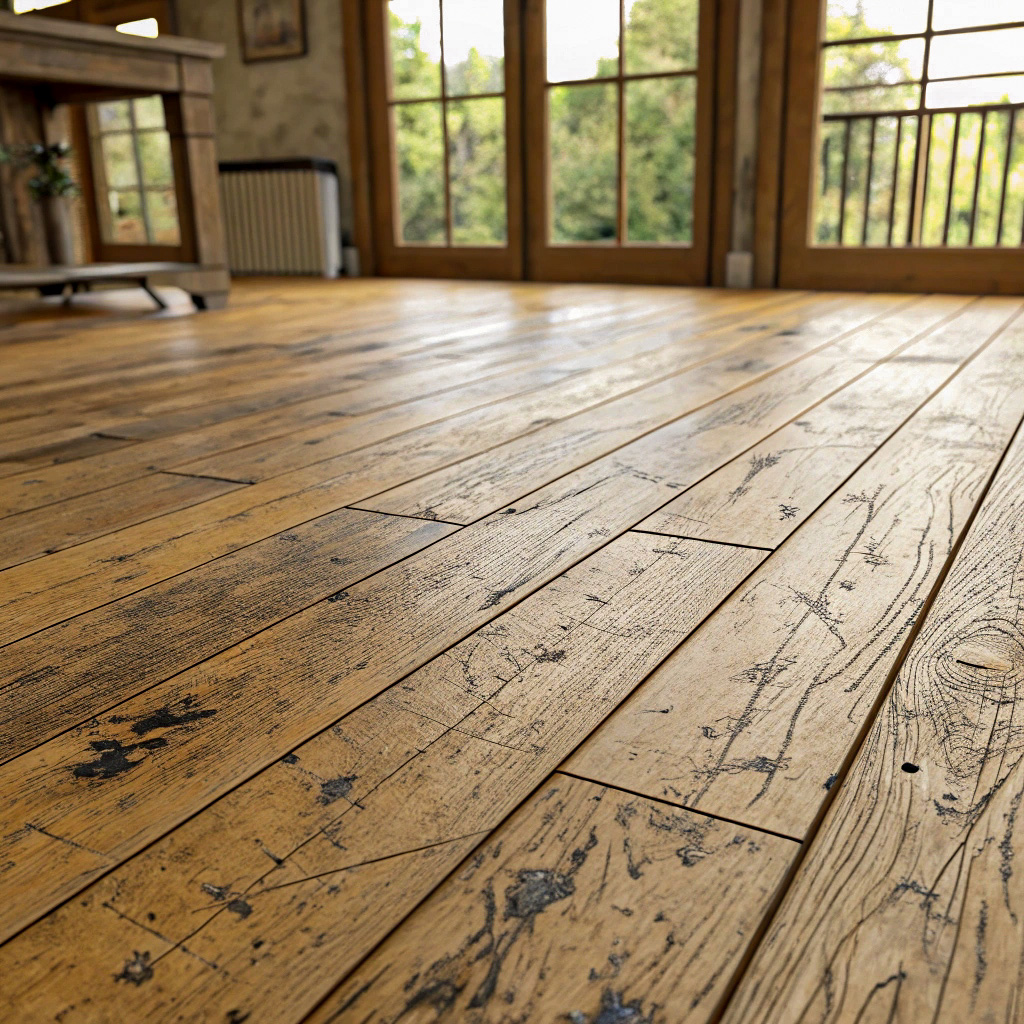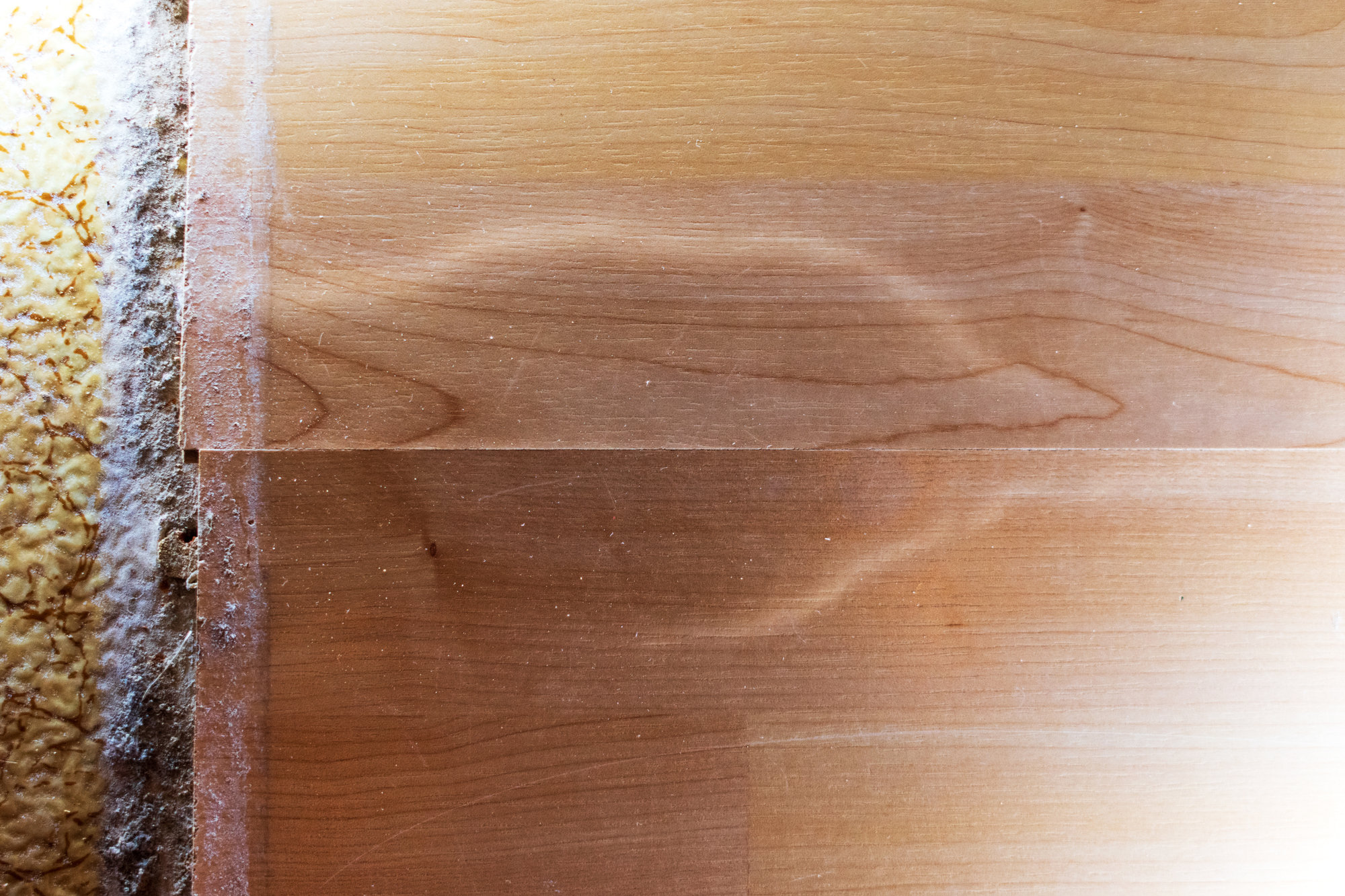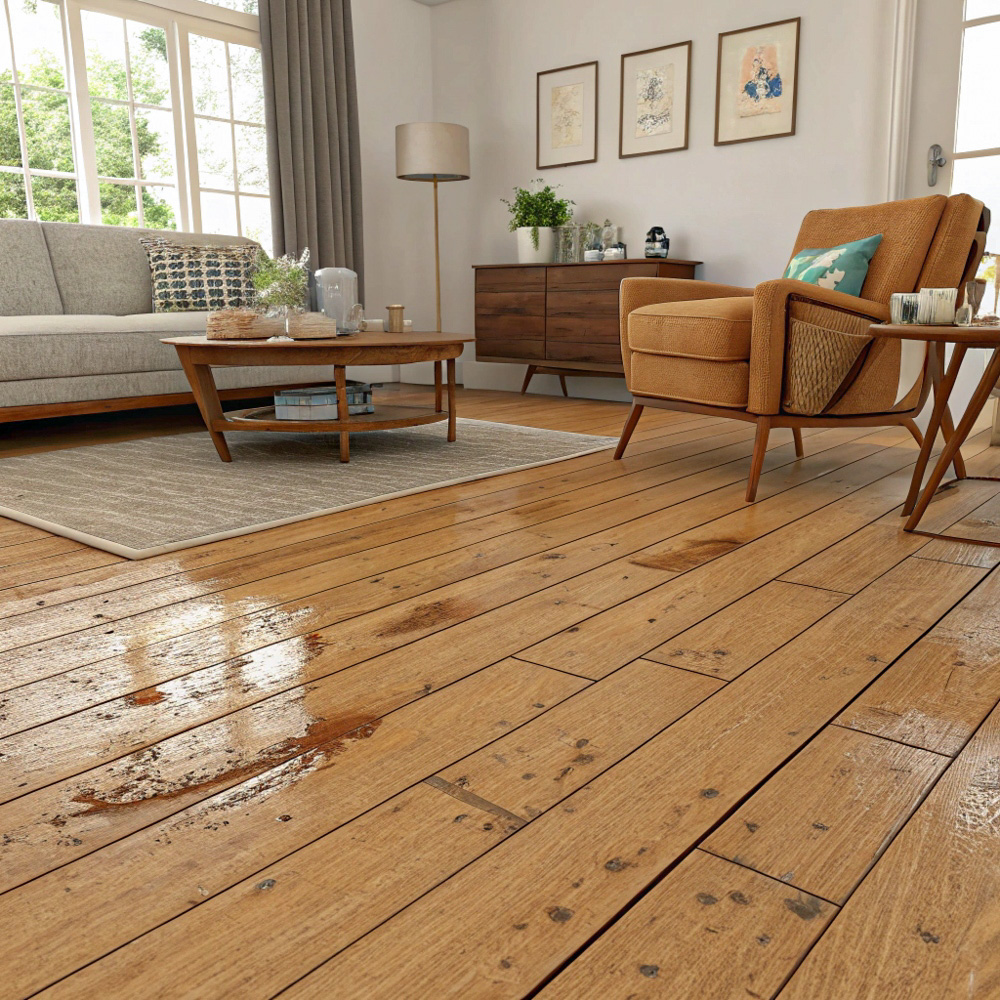While general replacement guidelines provide a useful baseline, your floors will tell you when they need attention through scratches, discoloration, water damage, and other signs of deterioration based on how you’ve used them.
By recognizing these warning signs early and maintaining proper care routines, you can maximize your hardwood floors’ lifespan and beauty while minimizing refinishing costs.
This guide will help you identify the telltale signs that indicate it’s time to refinish your floors and understand the factors that influence refinishing frequency.
Factors That Affect Refinishing Frequency
The frequency of hardwood floor refinishing isn’t a one-size-fits-all answer. Most hardwood floors benefit from refinishing every 7-10 years under normal residential use.
Several variables affect this timeline, including the type of wood, the quality of the previous finish, your household’s lifestyle, and maintenance practices. Softer woods like pine show wear more quickly than harder species like oak or maple.
Additionally, homes with pets, children, or frequent entertaining typically need more frequent refinishing than quieter households. Key factors include the following.
Foot Traffic and Usage Patterns
High-traffic areas experience significantly more wear than seldom-used spaces. Entryways, living rooms, and kitchen pathways endure constant foot traffic that gradually wears down the protective finish.
These areas may show signs of wear within 3-5 years, especially if family members frequently wear shoes indoors or have pets with long nails.
Conversely, guest bedrooms, formal dining rooms, or home offices typically see minimal foot traffic and can maintain their finish for much longer periods.
Understanding your home’s traffic patterns helps you prioritize which areas need attention first and budget accordingly for refinishing projects.
Environmental Conditions
Humidity levels, sunlight exposure, and temperature fluctuations all impact how quickly hardwood floors deteriorate. Homes in areas with extreme seasonal changes may see faster finish degradation due to wood expansion and contraction.
Direct sunlight streaming through windows can fade and break down floor finishes more rapidly than areas with consistent, indirect lighting.
Maintaining stable indoor humidity levels between 30-50% helps preserve both the wood and its finish. Excessive moisture can cause cupping and warping, while extremely dry conditions can lead to gaps and cracking that compromise the protective coating.
Key Signs Your Floors Need Refinishing

Regular inspection is essential for maintaining hardwood floors in peak condition. Unlike chemically inert materials such as tile or stone, wood is a living material that responds to environmental changes and daily wear.
Understanding both obvious and subtle warning signs helps you catch problems before they become costly repairs.
Recognizing these indicators early allows you to schedule refinishing at the optimal time, preserving your floors’ beauty while avoiding more extensive damage.
Some signs are immediately apparent, while others develop gradually and require a trained eye to detect.
Surface Damage and Wear Patterns
Large scratches are among the most obvious indicators that your hardwood floors need refinishing.
These noticeable scratches, scuffs, and surface marks reveal that the protective finish has worn away, leaving the underlying wood vulnerable to further damage.
Scratches typically result from moving furniture, pet claws, or dragging heavy objects across the floor. When scratches accumulate over time, they create a dull, worn appearance that detracts from your floor’s beauty.
While minor surface scratches might be addressed with spot treatments, widespread scratching indicates it’s time for a complete refinishing to restore that smooth, flawless surface.
Structural Damage
Chips and dents from accidental impacts with heavy or sharp objects not only affect the visual appeal but also compromise the structural integrity of your hardwood floors.
These imperfections create weak points where moisture and dirt can penetrate, potentially leading to more serious damage over time.
Professional refinishing can effectively repair minor chips and dents by sanding down the affected areas and applying fresh finish layers. Addressing these issues promptly prevents them from expanding and becoming more costly problems that might require board replacement.
Color and Finish Deterioration
Discoloration and fading patches across your hardwood floors typically indicate sun damage or excessive wear from foot traffic.
Prolonged exposure to direct sunlight breaks down the protective finish and can cause uneven fading that creates an unsightly patchwork appearance throughout your room.
Similarly, harsh cleaning chemicals or inappropriate cleaning methods can strip away the protective coating and cause premature finish deterioration.
When discoloration becomes noticeable across significant portions of your floor, refinishing will restore uniform color and bring back the wood’s natural beauty.
Safety and Maintenance Concerns
Splinters emerging from your hardwood floor surface create both safety hazards and clear indicators that refinishing is overdue.
As the protective finish wears away, the exposed wood becomes vulnerable to splintering, creating potential injury risks for family members and pets walking barefoot.
Additionally, if your floors feel sticky or tacky underfoot, this suggests the protective finish has deteriorated to the point where the wood is absorbing spills and cleaning products.
This not only creates an unpleasant walking surface but also makes regular maintenance much more difficult and less effective.
Water Damage and Moisture Issues

Water damage represents one of the most serious threats to hardwood flooring. Exposure to moisture from spills, leaks, or high humidity can cause a range of problems from simple staining to severe cupping, swelling, and warping.
These issues not only look unsightly but can also create an environment for mold growth. If you notice any signs of water damage, immediate action is crucial.
Refinishing can often repair water-damaged areas and restore protection against future moisture-related problems. However, severely damaged boards may require replacement before refinishing the entire floor.
Persistent Staining
Stubborn stains that resist regular cleaning methods indicate that contaminants have penetrated beyond the surface finish into the wood itself. Common culprits include pet accidents, food spills, or residue from inappropriate cleaning products that have been allowed to sit too long on the surface.
When stains become permanent fixtures despite your best cleaning efforts, refinishing becomes necessary to sand away the affected wood layers and apply fresh protective coatings. This process not only removes unsightly stains but also prevents them from spreading or becoming more deeply embedded.
Maintenance Tips to Extend Time Between Refinishing
Regular maintenance significantly extends the time between refinishing sessions and protects your investment in hardwood flooring. Simple daily practices like using doormats, removing shoes indoors, and promptly cleaning spills can add years to your floor’s lifespan.
Weekly sweeping or vacuuming removes abrasive dirt and debris that can scratch the surface.
Monthly deep cleaning with appropriate hardwood floor cleaners helps maintain the protective finish without causing damage. Avoid excessive water, harsh chemicals, or steam cleaning methods that can penetrate and damage the wood.
Additionally, using furniture pads, maintaining proper humidity levels, and strategically placing area rugs in high-traffic zones all contribute to preserving your floors’ appearance and extending refinishing intervals.
Bringing It All Together
Proactive refinishing not only restores appearance but also protects your floors from more serious damage that could require expensive repairs or replacement.
Don’t wait until minor issues become major problems. Regular assessment of your floors’ condition, combined with proper maintenance practices, ensures your hardwood floors continue adding warmth, elegance, and value to your home for decades to come.
When signs of wear become apparent, consulting with flooring professionals like ourselves can help determine the best refinishing approach for your specific situation and budget. If you’re looking for a more economical option, DIY floor refinishing is very doable with the right tools and guidance.


